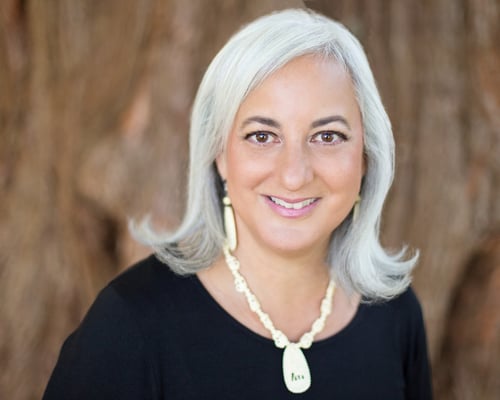Like so many of you, Tara Lynn Masih started to take writing more seriously during high school. As she embarked on her literary journey, one of the genres she became passionate about was flash fiction, or writing “vignettes”, as they were more commonly referred to then 1980’s. From there, her love of the genre grew, and as an adult, she penned her seminal text, The Rose Metal Press Field Guide to Writing Flash Fiction. Today, Tara, who we’re proud to announce will be our Flash Fiction Guest Judge, shares her tips for writing small to make a big impact.
We’re also excited to be giving away signed copies of Tara’s latest YA book, My Real Name is Hanna. To enter, all you have to do is enter the Flash Fiction Competition. Good luck!

In addition to works such as your latest YA book, My Real Name Is Hanna, you wrote the The Rose Metal Press Field Guide to Writing Flash Fiction. What initially attracted you to the flash fiction genre? Why was it important for you to compile this guide for writers?
I started writing seriously in high school. Up until that time, I used to just draw my own fairy tale cartoons or write bad personal poetry in journals. But I had a wonderful teacher, Kathy Collins at Northport High School, who had in turn been taught by poet Elizabeth Graves. Kathy’s style was thus to promote what she called “fragments” that packed an emotional punch. Then she’d have you string the fragments together to form a greater whole. So I started off in the early 1980s writing these fragments, that then were called “vignettes,” which later morphed into “flash” fiction (brought into the mainstream by Shapard and Thomas).
It was when a poet friend read one of my flash chapbooks and said he would love to learn how to write them that I realized flash anthologies existed, but no guides. I’m proud The Flash Field Guide was the first text totally devoted to teaching the genre.
For writers who struggle with wordiness, what advice do you have for penning a piece in 99 words or less?
Don’t necessarily write with 99 words in mind. Do try to be inspired by something that can be told “short,” but don’t feel constricted by the word limit. You can write longer, then edit it down. Have fun with that process. Have fun with the challenge of seeing what does not need to be there, what sentences or words can be cut. You’ll be surprised at what you can let go! Have faith in your little story, that if it’s done well, the reader can read between the lines.
What are you looking for in a winning flash fiction entry?
I always look first and foremost for originality. Stay away from stories that have been told before, unless you have an original way to write it down or a unique take on it. Then I look for craft (how much work went into the 99 words) and execution (how well did the writer tell the story). Finally the most important thing I look for is emotional resonance. I want to keep thinking about your story while I’m reading the other ones, and perhaps even think about it for the next day, or week.
What’s the best writing advice you’ve ever received?
Develop the skin of an armadillo: you want to be tender enough to take in some helpful criticism, but tough enough to handle the bad and discard what isn’t helpful.
We encourage students to peer review each other’s work prior to the final competition deadline. What, in your opinion, are some of the merits of working with an editor?
It’s really hard to be objective about your own stories or poetry. You are writing for others, so it’s great to get feedback from actual readers before you send out your work for publication. Having peers you can trust is really important. Write the World is a wonderful place to start!





